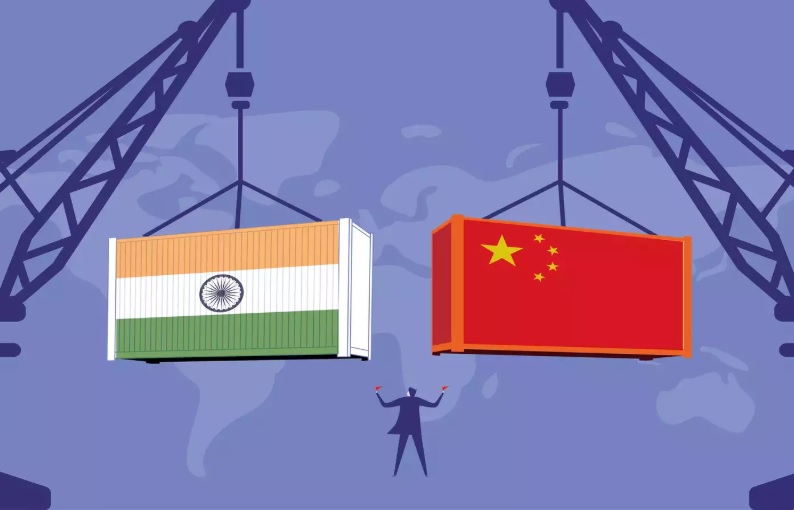
The US fashion industry is grappling with the need to diversify its sourcing, but moving away from China is a challenge. India emerges as a potential contender, boasting a robust and self-sufficient supply chain.
Is China dependence a burden?
The US fashion industry's dependence on China for apparel sourcing is facing a lot of scrutiny due to tariff concerns, forced labor allegations, and geopolitical risks. While there's a growing desire to diversify sourcing destinations, a recent report by Sheng Lu, professor of fashion and apparel studies at the University of Delaware, reveals that shifting away from China is easier said than done. Lu's findings, presented at the United States Fashion Industry Association's Apparel Importers Trade & Transportation Conference, highlight China's dominance in the US apparel import market.
Table: US fashion sourcing
|
Rank |
Country |
Market Share (Jan-Oct 2024) |
Number of SKUs |
|
1 |
China |
61% |
62,000 |
|
2 |
India |
12% |
15,000 |
|
3 |
Vietnam |
12% |
15,000 |
|
4 |
Cambodia |
3% |
3,500 |
|
5 |
Bangladesh |
2% |
<3,000 |
Source: Sheng Lu, University of Delaware
"The problem is that finding a sourcing locale that can offer the same breadth of products as China remains a lift so heavy that it's proven nearly impossible to budge," Lu stated. "Buying from China isn't so much about price anymore but capabilities." While alternate sourcing destinations like India and Vietnam have increased their apparel exports to the US, they still fall short of China's product range and complexity. For example, ‘Asia 5’ countries viz. Bangladesh, Cambodia, India, Indonesia, and Vietnam together can only fulfill 71 per cent of the tops and 47 per cent of dresses that China supplies to the US market.
India emerging a strong contender
India, with its comprehensive and largely self-sufficient textile and apparel supply chain, has the potential to become a significant sourcing hub for US fashion brands. The industry is vertically integrated, from cotton farming to garment manufacturing, offering a competitive advantage. "India's strength lies in its ability to offer a wide range of products across different price points, from value to luxury segments," says Avinash Mane, a textile industry analyst based in Mumbai. India has also made significant progress in improving its infrastructure and logistics capabilities, making it a more attractive sourcing destination.
Shahi Exports, India's largest garment exporter for example. It has been successfully catering to international brands like Gap, H&M, and Zara. The company's vertically integrated operations and focus on sustainability have enabled it to compete effectively in the global market. "We have invested heavily in building a sustainable and ethical supply chain," says Anant Ahuja, CEO, Shahi Exports. "This has helped us attract international buyers who are increasingly conscious of social and environmental responsibility."
However, despite its potential, India faces numerous issues in its bid to become a major sourcing hub for US fashion. Bureaucratic hurdles, infrastructure bottlenecks, and the need for further skill development in the workforce are some major issues. However, the government is actively promoting the textile and apparel industry through initiatives like the Production Linked Incentive (PLI) scheme, which aims to boost domestic manufacturing and exports. "The PLI scheme is a game-changer for the Indian textile industry," says Rahul Mehta, Chief Mentor of the Clothing Manufacturers Association of India (CMAI). "It will incentivize investments in technology and capacity building, making Indian companies more competitive globally."
The sustainability imperative
While China dominates traditional apparel manufacturing, Lu's research highlights an area where it lags: sustainable products made with recycled textiles. Italy currently leads this category, followed by the US, with China trailing behind.
This is an opportunity for India and it can capitalize on the growing demand for sustainable fashion. By investing in textile-to-textile recycling technologies and promoting eco-friendly practices, India can position itself as a preferred sourcing destination for environmentally conscious brands. "If you cannot compete with China for traditional products, turn the table; really compete on sustainability," Lu advises.
The moot point is as the US fashion industry seeks to reduce its reliance on China, India emerges a strong contender to fill the gap. With its comprehensive supply chain, competitive labor costs, and growing focus on sustainability, India has the potential to become a key sourcing hub for US fashion brands. While challenges remain, the country's proactive government policies and industry initiatives are paving the way for a more prominent role in the global fashion landscape.












